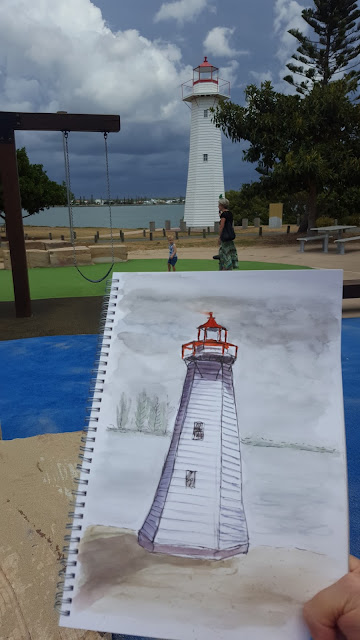This last weekend, the Brisbane City Sketchers went to Toowoomba for the whole weekend. My good friend Brett Danvers organised the whole thing and it was a fabulous weekend.
Toowoomba's colonial history traces
back to 1816 when English botanist and explorer Allan Cunningham arrived
in Australia from Brazil and in June 1827 discovered 4 million acres
(16,000 km²) of rich farming and grazing land, which became known as the
Darling Downs, bordered on the east by the Great Dividing Range.
The
city is full of fabulous historic buildings, gardens everywhere. The
Toowoomba railway station opened in 1867 and the magnificent building
still stands. There are more than 150 public parks and gardens in Toowoomba.
SATURDAY
The Toowoomba Japanese Garden
is the largest, most complex and traditionally designed Japanese Garden
in Australia. It was named Ju Raku En by the designer - roughly
translated it means long life and happiness in a public garden.
Christs Church in Margaret Street
It is now Quest Hotel Apartments.
Saturday
night was night sketching. What fun. Four of us settled in on the
corner of Ruthven and Margaret Streets and sketched the Gelatisimo cafe
This one is done in Copic markers
SUNDAY
No 5 Godsall Street












































